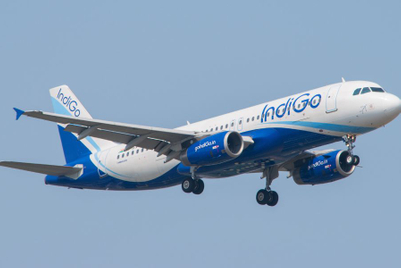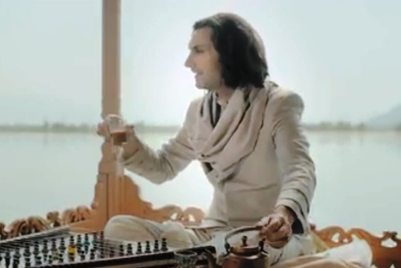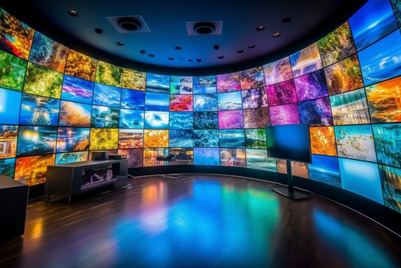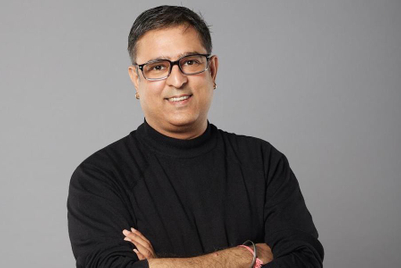Last week, the Dalmia Bharat group became the proud ‘sponsors’ of the historic Red Fort in Delhi, colloquially and popularly referred to as the Lal Qila. The 77-years old corporate group were granted 5-years rights to ‘adopt’ the 17th century Red Fort, built by India’s fifth Mughal ruler Shah Jahan, as he moved his administrative capital from Agra to present-day Delhi. Also in the race were IndiGo Airlines and the GMR group. The Dalmias will pay the Government of India Rs 25 crore towards the sponsorship, awarded under the ‘Adopt A Heritage’ scheme.
But even before the new sponsors could do a bit of chest-thumping and celebrate their ‘historic’ sponsorship, the opposition lashed out at the Government, labeling the handover as "nothing short of blasphemous". Trinamool Congress chief, and West Bengal Chief Minister Mamata Banerjee in fact tweeted, "Why can't the Government even take care of our historic Lal Qila? Red Fort is a symbol of our nation. It is where India's flag is hoisted on Independence Day. Why should it be leased out? Sad and dark day in our history."
Ministry of Tourism officials seemed unfazed by the criticism and maintained that the Dalmia’s adoption of Red Fort “is an important first step and that there are many more monuments and heritage places that need to be managed by private entities as they come on board as Monument Mitras (friends)”.
Under the ‘Adopt A Heritage’ scheme launched by the Indian government in September 2017, almost a 100 monuments and heritage sites across India have been put up for adoption. These include the Taj Mahal, the Kangra Fort, the Buddhist Kaneri caves, the Qutub Minar, the Hampi Caves, the Sun Temple, the Ajanta Caves, the Char Minar and the Kaziranga National Park, among others.
Even sites not maintained by the ASI, such as Chitkool village in Kinnaur district of Himachal Pradesh, Thembang in Arunachal Pradesh and the Sati Ghat at Haridwar have been also put up for adoption.
While the Dalmia group has bagged the Red Fort along with the Gandikota Fort in Andhra Pradesh, it is also likely to bag the contract for the Sun Temple in Konark.
Meanwhile, GMR Sports and ITC are the said to be finalists in the race to adopt the prestigious Taj Mahal.
It is not my intent to get involved in any controversy on whether the sponsorship is in national interest, or a betrayal of it. But just to understand the Government’s expectations from the sponsors, let us list out what the Dalmia Bharat group is expected to do at the Red Fort:
1. Broadly, under the contract, the Dalmia Bharat group will be expected to carry out a major facelift of the Red Fort’s surroundings under deadlines that range from a few months to over two years.
2. Two major tasks have to be completed before the Prime Minister’s speech on Independence Day, this year. The front lighting of the Red Fort, which involves “façade lighting and structure illumination”, will have to be completed by July. The illumination for the rest of the structure will have to be completed within the next two years. Secondly, the sponsors will have to put up art installations for the Independence Day event every year. It is not clear, though, if this will have to be done in the current year as well.
3. Certain basic amenities have to be provided within six months. These include drinking water kiosks, street furniture-like benches and shop signages. Other basic amenities that have to be provided within two years include installing turnstiles at check points, fencing with sliding doors and tactile paving.
4. Tasks that have to be completed within a year include putting up tactile maps, upgrading toilets, lighting up the Red Fort pathways and bollards, restoration work and landscaping, building a 1,000-square-foot visitor facility centre, 3-D projection mapping of the Red Fort’s interior and exterior, battery-operated vehicles and charging stations for such vehicles and a thematic cafeteria.
5. Other tasks that need to be completed within two years include setting up exhibitions in cells under the Asad Burj, virtual reality-based monument interpretation, building night trails and structural illumination of the entire Red Fort.
So, the Government has struck a hard bargain. The deliverables may not look difficult to provide but there is surely going to be a lot of hard work involved for the sponsors.
Governments are always strapped for funds. So the initiative of the Indian Government to invite private participation in providing better amenities and a better visitor experience at the various heritage sites and monuments is actually laudable. However, the criticism of the Opposition may be valid too that it does not behove and befit national monuments to be ‘branded’ by private enterprises.
Is private participation in preserving and perpetuating national heritage a new idea? Or has it been done elsewhere too in the world?
There are umpteen examples of how private entities have been invited to participate in the upkeep and up-gradation of monuments and edifices of national importance worldwide. To keep the discussion focused, let us just look at best practices from the Eiffel Tower in Paris.
More tourists visited the Eiffel in the past 30-years, than in the 100-years before that. Which is both good and bad. Good, because it underlines the continuing popularity of the Eiffel despite so many more new attractions around the world. Bad, because the Eiffel which came up in 1887, requires even more care and looking after with increase in foot-falls, hence wear-and-tear. The custodians of the Eiffel have constantly come up with more and more innovative ideas to generate funds for the Eiffel, without compromising its stature and its global standing. In fact every new idea has contributed to making the Eiffel tower more contemporary, more newsworthy and more ‘touristy’. And richer.
-
32,000 people visit the 1,050-foot tower in peak season every day. But no one has ever stayed over for the night at the Eiffel. The marketing team of the Eiffel partnered with vacation rental home company Home Away and ad agency Saatchi & Saatchi London/Paris to create a majestic apartment space right in the Eiffel where a few lucky people could stay the night. Home Away launched the ‘Eiffel Tower All Yours’ campaign as part of the brand's sponsorship of the 2016 UEFA EURO tournament, held that summer in 10 locations across France, including Paris. The temporary apartment, created in partnership with French interior designer Benoit Leleu, could hold up to six people for one night and included dinner and breakfast inside the apartment besides airfare courtesy of Expedia. Football fans in town for the tournament could stay over for the night and watch the soccer matches from a high-tech TV viewing room inside the Eiffel Tower apartment while taking in the breathtaking Parisian skyline during halftime. It was a once-in-a-lifetime-experience for sure. The media went to town on the innovation, with millions worth of free PR for the Eiffel. The management of the Eiffel of course was also richer by over a couple of million Euros for the short term rental of a part of the tower.
-
The marketing team of the Eiffel, in 2015, partnered FPS Towers/ATC France to create the La Verticale de la Tour Eiffel, a vertical race up the Eiffel Tower's 1,665 steps. The 2017 version had 22 women and 84 men, representing 18 countries, racing up the 324 meters of the Eiffel Tower. The event, is now an intrinsic part of the annual calendar of the Eiffel. It brings in a million Euros in sponsorship money to the Tower every year, and of course tonnes of good (and free) publicity.
-
Orange was roped in by the Eiffel team to sponsor a unique event during Euro 2016. The ‘Orange Sponsors You’ campaign partnered the City of Paris and the Eiffel to showcase the passion of fans at Euro 2016 by illuminating the Eiffel Tower with the colours of the most supported nation. Throughout the Euro 2016 competition Orange would analyse fan support across Facebook, Twitter and Instagram by monitoring the number of posts hashtags for each nation such as #Eng for England and #Fra for France. Then 10 minutes after the end of each day’s final game the Eiffel Tower was transformed with a unique light show in the colours of the most backed nation. The entire deal was orchestrated by Orange’s agency, Poke, and earned the Eiffel an estimated Euro 5 million in revenues.
-
To retain and grow tourist interest, the Eiffel believes in constantly reinventing itself. So, some years back, plans were mooted to completely refurbish the events area, the restaurant pavilion and shop, and design a museographic pathway at the first level of the Eiffel tower, 57 meters above the ground. A glass floor overlooking a void and a complete immersion video, both of which would deliver a spectacular experience for visitors, were also planned. The French architect, Alain Moatti got Saint-Gobain to come in as partners for the project. 128 square meters of Lite-Floor Xtra Grip anti-skid glass tiles were manufactured at Saint-Gobain’s Eckelt Glas plant in Austria specially for the Eiffel. The collaboration was a win-win for all. Saint-Gobain got bragging rights. The Eiffel got itself a new attraction: an exceptional view of the city and of the Tower itself, allowing visitors to explore the structure from this overhang vantage point.
The Eiffel examples should serve as possible pointers for the mandarins in the Govt. of India on how ‘Monument Mitras’ can be created without compromising the identity and glory of a heritage property or site. Of course, as the Eiffel examples show, the innovations need a lot of thinking, open-mindedness and also marketing outreach.
Having launched the ‘Adopt A Heritage’ scheme, and having invited private participation, the Government should now go ahead with the initiative without being cowed down by Opposition criticism. The Government and the ASI should make sure that the public-private partnerships deliver the desired results making India’s tourist destinations more desirable and friendly. But, at the same time, efforts should also be made to look for events like those at the Eiffel that bring in sponsorship money as well as infrastructure without the long term overhang of sponsors.
 (Sandeep Goyal constantly explores better ways to do whatever you are doing, be it business, or sponsorships.)
(Sandeep Goyal constantly explores better ways to do whatever you are doing, be it business, or sponsorships.)

 (Sandeep Goyal constantly explores better ways to do whatever you are doing, be it business, or sponsorships.)
(Sandeep Goyal constantly explores better ways to do whatever you are doing, be it business, or sponsorships.) 

.jpg&h=334&w=500&q=100&v=20250320&c=1)
.jpg&h=334&w=500&q=100&v=20250320&c=1)

.jpg&h=334&w=500&q=100&v=20250320&c=1)


.jpg&h=334&w=500&q=100&v=20250320&c=1)


.jpg&h=334&w=500&q=100&v=20250320&c=1)

.png&h=268&w=401&q=100&v=20250320&c=1)


.jpg&h=268&w=401&q=100&v=20250320&c=1)



